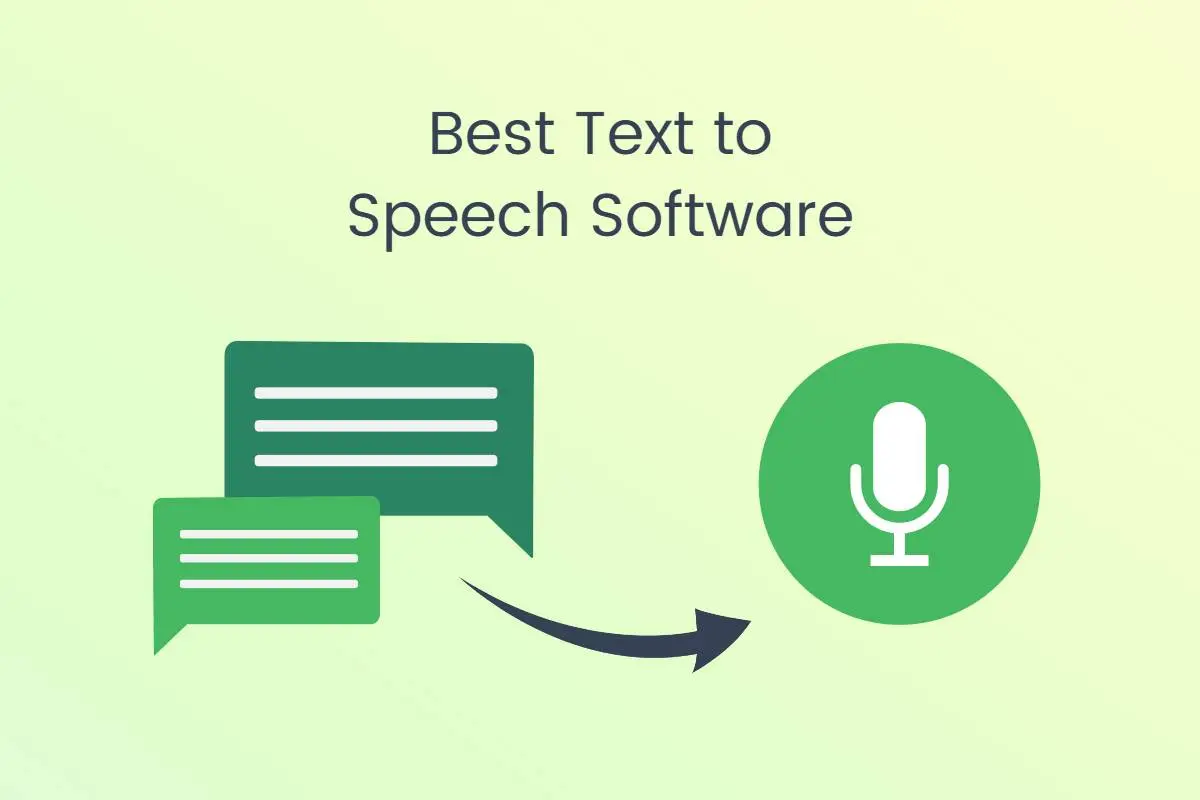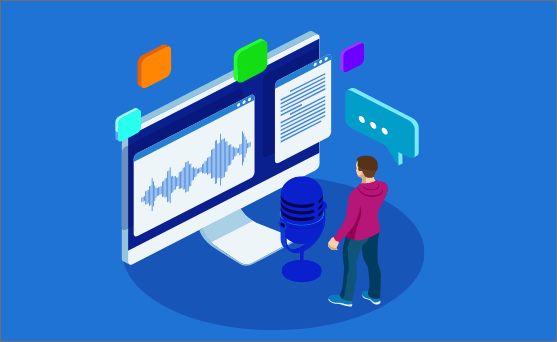Exploring 2023-24's Elite TTS Software: A Guide for Professionals

Unveiling the Top TTS Software of 2023-24: Transforming Voice Technology
The burgeoning landscape of voice technology has reached a pivotal turning point with the top Text-to-Speech (TTS) software of 2023-24, heralding a new dawn for digital communication and interaction. These TTS tools represent the bleeding edge of innovation, driven by groundbreaking advancements in Artificial Intelligence (AI) and Deep Learning (DL), which have fortified their ability to provide realistic and natural-sounding voices. As the needs of users evolve, so too does the TTS software, expanding its influence across various platforms and industries, from bolstering accessibility initiatives to offering creative solutions for content creators and businesses alike.
Amidst the accelerating pace of technological evolution, these TTS systems stand out for their superior voice quality, extensive language and accent options, and unprecedented ease of integration through sophisticated Application Programming Interfaces (APIs). This transition speaks volumes about the future potential of TTS technology, as it begins to encompass a realm where seamless and human-like digital interaction is the norm. By bridging human ingenuity with AI's capabilities, the top TTS software of 2023-24 not only addresses the growing demands for enhanced auditory experiences but also propels the tech industry into an era of vocal innovation.
| Topics | Discussions |
|---|---|
| The Future of Text-to-Speech | Delve into the advancements that will define the future of text-to-speech technology, touching on implications for accessibility and digital interaction. |
| Best Text to Speech Software of 2023-24 | Analyzing the market's top TTS software, with a focus on emerging features that improve voice quality and user experience. |
| Advancements in TTS | Exploring the latest innovations in TTS technology, including AI's role in enhancing the fidelity and capabilities of voice synthesis. |
| TTS Programming Tutorials | Tips and tutorials for developers on integrating and optimizing TTS within applications, with programming examples for practical understanding. |
| TTS Applications and Use Cases | Insight into how TTS is being applied across different sectors, from creating immersive gaming experiences to facilitating learning. |
| Common Questions Re: TTS Technology | Answering the most pressing questions about the current state and future prospects of TTS technology. |
The Future of Text-to-Speech
Navigating the future of Text-to-Speech (TTS) technologies requires one to be conversant with an array of specialized terminologies. Understanding these key terms is essential for grasping the complex advancements that are shaping the realm of voice technology. Below is a glossary designed to elucidate the core concepts and technological underpinnings that anyone working with TTS—be it in academic research, software engineering, or audio content creation—needs to be familiar with.
TTS (Text-to-Speech): A form of synthesis technology that converts text into spoken voice output, commonly used in various applications where reading text aloud is advantageous.
AI (Artificial Intelligence): The simulation of human intelligence by machines, with applications ranging from problem-solving and learning to perception and speech recognition.
DL (Deep Learning): An AI function that imitates the workings of the human brain in processing data and creating patterns for use in decision-making.
Machine Learning: A method of data analysis that automates analytical model building, enabling computers to learn from and make predictions or decisions based on data.
Neural Networks: Computing systems vaguely inspired by the biological neural networks that constitute animal brains, which are used to estimate or approximate functions that can depend on a large number of inputs.
API (Application Programming Interface): A set of routines, protocols, and tools for building software applications, which specifies how software components should interact.
Speech Synthesis: The artificial production of human speech by a computer, available in software and hardware form.
NLP (Natural Language Processing): A field of AI focused on the interaction between computers and humans through natural language, aiming to read, decipher, and make sense of human languages in a valuable manner.
Accessibility: Referring to the design of devices, products, or environments, to make them accessible to people with disabilities, which in the context of TTS includes making written text audibly accessible.

Best Text to Speech Software of 2023-24
In the comprehensive review posted on October 3rd, 2023, titled "Best 10 Text to Speech Software of 2023-24," readers are guided through the most innovative TTS tools available in the tech market. These tools, essential for converting written content into audible speech, demonstrate significant advancements characterized by their ability to produce high-quality, natural-sounding voices. This advancement not only caters to the need for enhanced user experiences but also indicates the heavy integration of AI and machine learning technologies that power their capabilities.
The criteria for inclusion in this distinguished list—while not explicitly detailed—suggest evaluation based on voice realism, language versatility, user interface design, and integration ease through accessible APIs. The identified software not only supports but enhances functionality across a spectrum of industries, highlighting the central role of TTS in sectors that prioritize accessibility and the emerging dimensions of e-learning.
Published by Alex McFarland, the piece presents these TTS solutions within an interactive online platform, as indicated by cookie usage, thereby enhancing the user's digital journey in exploring TTS options. The prominence of TTS technologies, as detailed in this 14-minute exposé, signifies a considerable leap in their importance, reflecting their ever-growing presence in digital products and services to better serve a diverse global audience.
Advancements in TTS
Text-to-Speech (TTS) technology has seen extensive advancements in recent years, a trend prominently highlighted by the TTS software of 2023-24. The improvements pivot on the integration of advanced AI and ML algorithms, which have considerably enhanced the quality of synthesized speech. These algorithms are capable of learning from extensive data sets of human speech and producing output that increasingly resembles natural human intonation, rhythm, and pronunciation.
The TTS landscape has expanded to include more than just converting text into speech; now, there is an emphasis on delivering voice quality that can express a broader range of human emotions and speak in multiple languages with various dialects. This versatility has expanded the use cases for TTS, making it an indispensable tool not just for accessibility but also for interactive media, virtual assistants, and educational content.
Nowadays, TTS systems also offer better user interfaces and easier integration processes, largely due to the more accessible APIs. This shift towards convenience and user-friendliness has encouraged even those with limited technical backgrounds to utilize TTS technologies in their projects, further widening the technology's application and influence.
TTS Programming Tutorials
Integrating TTS APIs
Integrating Text-to-Speech (TTS) APIs into software applications allows developers to create more interactive and accessible products. For example, using Google's Cloud Text-to-Speech API with Python involves a few straightforward steps. After setting up your Google Cloud Platform account and retrieving your API key, you install the necessary client library and then use the following code to convert text into speech:
import requests
response = requests.post(
'https://api.v6.unrealspeech.com/stream',
headers = {
'Authorization' : 'Bearer YOUR_API_KEY'
},
json = {
'Text': '''<YOUR_TEXT>''', # Up to 1,000 characters
'VoiceId': '<VOICE_ID>', # Scarlett, Dan, Liv, Will, Amy
'Bitrate': '192k', # 320k, 256k, 192k, ...
'Speed': '0', # -1.0 to 1.0
'Pitch': '1', # 0.5 to 1.5
'Codec': 'libmp3lame', # libmp3lame or pcm_mulaw
}
)
with open('audio.mp3', 'wb') as f:
f.write(response.content)This code will produce an MP3 file from the input text using the desired voice and language settings.
Customizing TTS Voices and Languages
Customizing voices and languages with a TTS API involves specifying additional parameters to adjust voice characteristics such as pitch, speaking rate, and volume. For instance, AWS's Polly service offers such customization, and here is how you might use it with Python's boto3 library:
import boto3# Create a Polly clientpolly = boto3.client('polly')# Request speech synthesisresponse = polly.synthesize_speech(Text='Your text here', OutputFormat='mp3', VoiceId='Joanna',SpeechMarkTypes=['ssml'],LanguageCode='en-US',Engine='neural',SampleRate='22050',TextType='ssml')# Access the audio stream from the responseif 'AudioStream' in response:with open('speech.mp3', 'wb') as file:file.write(response['AudioStream'].read())print('File "speech.mp3" has been written')
In the above Python script, various parameters of the Polly service are set to tailor the resultant speech to specific requirements. Remember, the specifics of such customization will vary across different TTS services and APIs.
TTS Applications and Use Cases
Unreal Speech, with its innovative text-to-speech synthesis API, provides an economic solution that significantly slashes costs for a variety of users. Academic researchers can leverage this technology to convert extensive text into speech for various analyses and studies, thereby enhancing the research process without the burden of high costs associated with speech synthesis. The cost-reduction benefits and the platform's ability to handle large volumes of content efficiently make it an ideal tool for academia.
Software engineers will find the Unreal Speech API especially beneficial, as it allows for seamless integration into applications, ensuring high-quality voice output at reduced costs, which is crucial when developing apps that require voice functionality. Game developers can implement the API to bring characters to life with realistic voices, making the gaming experience more immersive without incurring prohibitive expenses.
For educators, Unreal Speech offers the opportunity to create dynamic, engaging educational content. The technology's potential for high audio duration and the variety of characters enable educators to craft extensive, high-quality audio materials that cater to different learning styles and needs. With volume discounts, the more content is generated, the more cost-effective the solution becomes, representing a scalable approach to enriching the educational landscape.
Common Questions Re: TTS Technology
Decoding AI Tools for Text-to-Speech: How Do They Work?
AI tools for text-to-speech function by employing machine learning models, particularly neural networks, which are trained on large amounts of voice data. These networks learn the nuances of human speech, such as intonation and rhythm, to produce lifelike and natural-sounding voices from text input.
Identifying the Best AI Voice Generators on the Market
The best AI voice generators are characterized by their realistic voice quality, multilingual capabilities, ease of integration, and versatile customization options, utilizing extensive datasets and sophisticated deep learning models to synthesize human-like speech.
Can TTS Technology Replicate Distinct Accents and Languages?
Yes, modern TTS technology can replicate a wide range of distinct accents and languages with a high degree of accuracy, thanks to increasingly sophisticated machine learning algorithms that draw from expansive, diverse linguistic data.